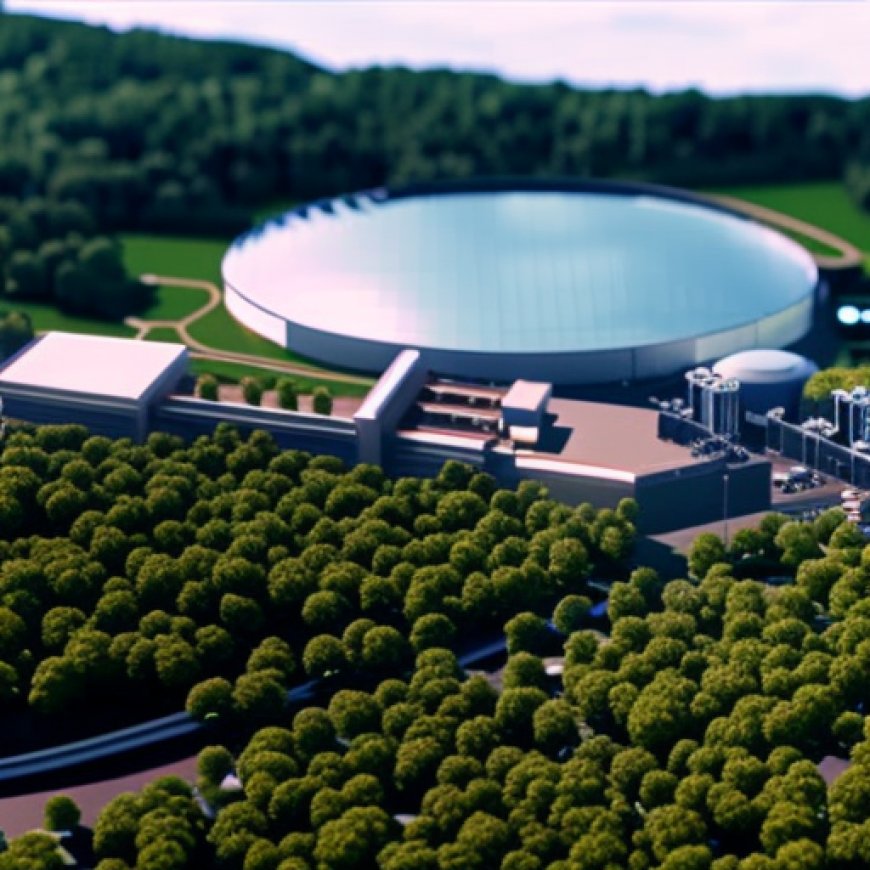Water company looks to expand its Hampshire waste treatment plant
Southern Water applies to expand Romsey Wastewater Treatment ... Hampshire Chronicle


The Proposed Extension of Romsey Wastewater Facility
The proposed extension of the Romsey Wastewater facility includes the installation of a new final settlement tank, a return activation sludge (RAS) pumping station, associated pipework, new perimeter fencing, and landscape planting.
Background
The letter submitted by Southern Water to Hampshire County Council, alongside the planning application, states that the proposed development is necessary to enable compliance with an enhanced discharge permit for Phosphorous as set by the Environment Agency. The new discharge consent will take effect from 22nd December 2024, and the works will improve the quality of the treated effluent that is discharged to the environment.
Location and Site Details
The proposed extension is to be located at Romsey Wastewater Treatment Works (WTW), which occupies an area of 3.9 hectares. The proposed site for the extension of WTW covers an area of about 2,350 square meters. It is recommended to remove the security fence and vegetation along the western boundary of the current WTW and install new security fencing around the extended WTW perimeter.
Proposed Development
The proposed development comprises the extension of the existing WTW to the east. Within the extended area, there will be a new final settlement tank (FST) and a return activated sludge (RAS) pumping station, with associated below-ground pipework connections. The FST will extend partially underground and rise to a height of 1.1m above ground level. It will be used in the final stages of the wastewater treatment process to settle out any biological material from effluent following the early stages of treatment. Works on the internal roads will also be extended to provide vehicular access to the new plant items.
Landscape Planting Scheme
The development plan includes a landscape planting scheme that involves planting a triple staggered native species hedgerow along the WTW boundaries and willow scrub, a wildflower meadow, and amenity grass.
Public Consultation
The public consultation period started on July 26 and will end on August 25. If you wish to submit your comments, visit the Hampshire County Council website with the HCC/2023/0421 reference number.
SDGs, Targets, and Indicators Analysis
1. Which SDGs are addressed or connected to the issues highlighted in the article?
- SDG 6: Clean Water and Sanitation
- SDG 15: Life on Land
The article discusses the proposed extension of the Romsey Wastewater facility, which is related to ensuring clean water and sanitation (SDG 6). It mentions that the extension is necessary to comply with an enhanced discharge permit for Phosphorous set by the Environment Agency, indicating a focus on water quality. Additionally, the article mentions a landscape planting scheme, which connects to SDG 15, as it involves preserving and restoring terrestrial ecosystems.
2. What specific targets under those SDGs can be identified based on the article’s content?
- SDG 6.3: By 2030, improve water quality by reducing pollution, eliminating dumping, and minimizing release of hazardous chemicals and materials.
- SDG 15.9: By 2020, integrate ecosystem and biodiversity values into national and local planning, development processes, poverty reduction strategies, and accounts.
The proposed extension of the wastewater facility aims to improve the quality of the treated effluent that is discharged to the environment, aligning with SDG 6.3’s target of improving water quality. The landscape planting scheme mentioned in the article also contributes to SDG 15.9 by integrating biodiversity values into the development process.
3. Are there any indicators mentioned or implied in the article that can be used to measure progress towards the identified targets?
- Indicator for SDG 6.3: Concentration of phosphorus in wastewater effluent.
- Indicator for SDG 15.9: Increase in the area of native species hedgerow, willow scrub, wildflower meadow, and amenity grass.
The article mentions that the proposed development is necessary to comply with an enhanced discharge permit for Phosphorous set by the Environment Agency. Therefore, the concentration of phosphorus in wastewater effluent can be used as an indicator to measure progress towards SDG 6.3. Additionally, the landscape planting scheme, which involves planting native species hedgerow, willow scrub, wildflower meadow, and amenity grass, can be measured in terms of the increase in area to track progress towards SDG 15.9.
SDGs, Targets, and Indicators Table
| SDGs | Targets | Indicators |
|---|---|---|
| SDG 6: Clean Water and Sanitation | 6.3: By 2030, improve water quality by reducing pollution, eliminating dumping, and minimizing release of hazardous chemicals and materials. | Concentration of phosphorus in wastewater effluent. |
| SDG 15: Life on Land | 15.9: By 2020, integrate ecosystem and biodiversity values into national and local planning, development processes, poverty reduction strategies, and accounts. | Increase in the area of native species hedgerow, willow scrub, wildflower meadow, and amenity grass. |
Behold! This splendid article springs forth from the wellspring of knowledge, shaped by a wondrous proprietary AI technology that delved into a vast ocean of data, illuminating the path towards the Sustainable Development Goals. Remember that all rights are reserved by SDG Investors LLC, empowering us to champion progress together.
Source: hampshirechronicle.co.uk

Join us, as fellow seekers of change, on a transformative journey at https://sdgtalks.ai/welcome, where you can become a member and actively contribute to shaping a brighter future.







